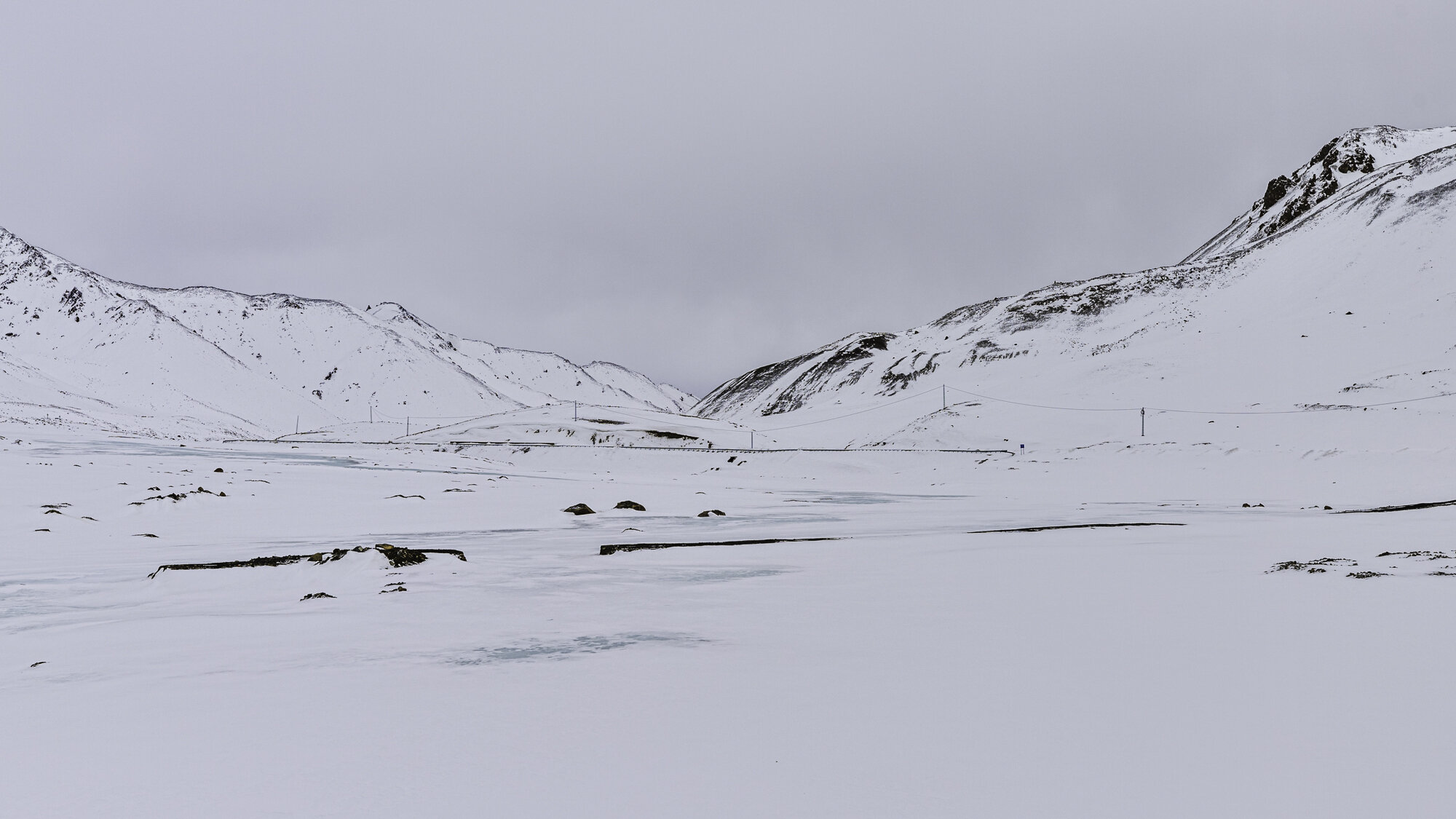Postcard from the Khunjerab Pass
The road disappears under snow and ice
We are driving 182 kilometres from Hunza at an elevation of 2,438m, along the Karakoram Highway, to the Khunjerab Pass at the Chinese Border. We will be driving through the Khunjerab National Park at an elevation of 5,200m. The upgrading of the Karakoram Highway is part of the China-Pakistan Economic Corridor.
Our first stop is at the exceptionally blue Attabad Lake. The lake was formed in January 2010 as a result of a landslide. Twenty people were killed and villages disappeared under water. The Hunza River was blocked for five months. The Karakoram Highway was moved and five tunnels were built named the Pak-China Friendship Tunnels. The longest tunnel is over 3,000m. Today the Lake is used for boating and fishing.
After the tunnels we enter a world of muted colours, of grey rocks and skies, of white snow and blue ice. I am surprised at how quickly the landscape changes, it seems that winter is still here. I find the stark landscape very beautiful, but the winds are bitterly cold.
We have been told that the Khunjerab National Park is open to visitors and we should be able to make it to the border. However, we are warned to be extra careful as the day before a 4WD had come off the road. As spring comes to this region the snow melts and ice forms making the roads dangerous.
The National Park is known for its wildlife: yaks; snow leopards; Marco Polo sheep; ibex; marmots; lynx; wolves; foxes and numerous birds. It covers an area of over two thousand square kilometres. There are some trees that seem to be able to flourish in the snow: juniper; birch; willow and poplar. Trees soon give way to low bushes and then low grasses. We stop and watch herds of yaks move slowly, looking for grass. They don’t mind having their photo taken. The ibex are lot more skittish and run and jump out of our way.
We drive slowly up the winding road that is wide and well maintained. Soon the road becomes difficult and disappears under snow and ice. Within two kilometres we give up hope of reaching the Chinese Border. The snow is too thick, and we can’t see the edges of the road ahead. Time to turn around and head back to Hunza. On the way down we see a flash of orange. I think it is a fox, but we are told it is a golden marmot, a lucky, rare sighting. We watch as it moves with surprising speed across the steep and icy slopes. On the way home we stop at the Hussaini Suspension Bridge, the subject of my next blog.
We return to the mild, green, and blossom filled Hunza Valley. It has taken a day to not reach the Chinese Border but it has been another day filled with adventure, beauty and wonder.
Attabad Lake
One of the Pakistan-China Friendship Tunnels
As we pass through the tunnels and come out the other side it feels like all the colour has been removed from the landscape
A photo opportunity for Geoff to wear the local cap and scarf, both are made from wool, both are very warm
There are a small number of suspension bridges crossing the Hunza River, this one is for cars
We watch as the black 4WD crosses over the bridge
We stop so I can photograph these beautiful Birch trees
Unconcerned Yak
He lifted his head and seemed to say ‘take my portrait please’
Ibex
What you don’t want to see at the side of the road
We stop for a very quick selfie and then jump back into the warm car
Golden marmot

























